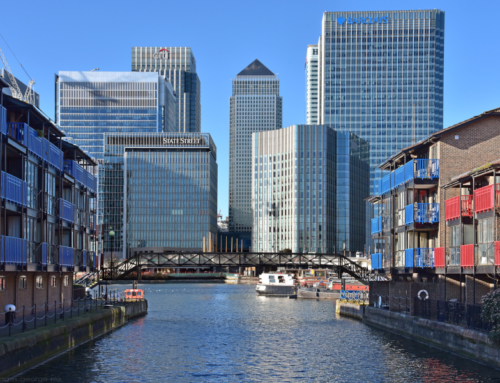by Steve Watson
7 minute readA big white, flowing beard is just as integral to our idea of Santa Claus as his gift giving, his ability to travel around the world in a single night, and his fondness for sherry and biscuits. Aside from reflecting his great age, Santa’s luxurious growth must surely help to keep him warm up at the North Pole or when riding a reindeer powered sleigh through the Christmas Eve sky.
But what if there is a Christmas moral hidden deep inside Santa’s fluffy chin feature? Could it be that Santa’s beard is a lesson in achieving a kind of sustainable growth hitherto overlooked in discussions of the circular economy? In short, is it more environmentally friendly to keep a beard than to keep clean shaven?
Razor burn
Since Santa has to consume vast quantities of global resources every year to produce all those new toys, maybe he’s trying to reduce his resource footprint elsewhere by avoiding disposable grooming products.
According to statistics website Statista, in 2018 an estimated 5.5 million people in Great Britain used disposable razors, while 13.7 million used refillable razors with disposable blade cartridges. There is no gender split available on these figures, so in the absence of any other data that suggests how many women are using these products we may as well split the numbers in half and estimate that 2.8 million men shave with disposable razors while 6.8 million use disposable blade cartridges.
Meanwhile, razor manufacturer Gillette states that disposable razors can last for three to 10 shaves, while disposable cartridges last between five and 10. Being generous and taking the upper limit of 10 shaves for both, and assuming that men shave once a day, we reach a (very rough) estimate of around 100 million disposable razors and around 250 million disposable razor cartridges being used every year by British men in a daily battle against facial hirsuteness.
As these products are composed of petro-chemical derived plastics and steel, it is clear that shaving accounts for considerable resource consumption with high associated carbon impacts. What makes the situation even worse is that these disposable products cannot be commonly recycled through household collection schemes. And while Gillette has recently partnered with Terracycle to launch the UK’s first razor recycling scheme, it seems unlikely that the majority of shavers will participate in a return scheme that requires them to send away for special envelopes.
Alternatively, razor users can opt to go plastic-free with any of a range of reusable razors, with removable blades that can be recycled as scrap metal at the end of their useable life. If used over an extended period of time, these razors would result in an appreciable saving in resource usage. Meanwhile, Slate magazine calculated that, on balance, an electric shaver might also beat disposables – but they assume most of the emissions from wet shaving come from heating the water, so much depends on how much hot water you use.
Shaving doesn’t gel
In addition to the non-circular consumption of plastics and metal in razors, there are a host of other environmental disbenefits associated with shaving gels and foams. The Ethical Consumer website lists a number of potential issues with these products that consumers should be aware of, including the presence of toxic chemicals, plastic micro-beads, and unsustainable palm oil.
The toxic chemicals you might find in shaving products are parabens, triclosan and phthalates. The U.S. Food & Drug Administration (FDA) has linked parabens and tricolosan to the disruption of hormone function and increased risk of cancer. Meanwhile, phthalates have been linked to a whole host of health problems including asthma, ADHD, type II diabetes and male fertility issues.
Micro-beads are microscopic pieces of plastic added to cosmetic products as an exfoliating agent. The problem is that after they are washed down the drain they are too small to be captured by wastewater treatment facilities, and so eventually reach the ocean where they are ingested by marine life. Globally, 350,000 tonnes of microplastics are released into the marine environment every year from cosmetic products.
Meanwhile, oil palm crops can only be grown in tropical regions of rainforest, which means that historically the industrial scale production of palm oil has been a cause of deforestation. While there are arguments to be made for continuing palm oil production in a sustainable manner – a topic previously explored on Isonomia – the use of unsustainable palm oil is one reason that Santa might want to keep shaving foam far away from his rosy cheeks.
For those wanting to minimise their environmental impacts and avoid dangerous toxins while maintaining a cleanly shaven visage, the Ethical Consumer Guide mentioned above provides an index of shaving products ranked by their performance on a host of environmental and social issues. But, for those looking for an excuse to grow something that wouldn’t look out of place on stage with ZZ Top, it isn’t too hard to make a green case for beard growth.
Naughty or nice?
According to research undertaken by opinion polling firm YouGov, the number of men in the UK following Santa’s example by growing some kind of facial hair rose from 37% in mid-2011 to 42% in late 2016. Moreover, among those with facial hair, the number with full beards rose from 29% to 44% over the same period. Overall, that means 18% of men in the UK were benefiting from the face warming properties of a beard during Christmas 2016.
Should we conclude that, by avoiding the impacts associated with shaving, all these boys are going straight on Santa’s nice list? In the interests of fairness we should first consider whether beards have any environmental impacts of their own. For one, unless you are an island castaway or wizard, you will probably want to trim your beard at some point, in which case you’ll need either scissors or an electric razor, which have their own resource impacts – especially the electric razor, which contains plastics and metal, and will need to eventually be disposed of properly in through a WEEE collection. However, both are reusable and, as fairly basic contraptions, should see you through multiple Christmases.
Furthermore, as the hair removed in beard trimming will be uncontaminated by shaving foam you can always add it to your home composting bin: apparently – being essentially protein – it makes a great meal for worms.
Taking care of beardiness
One possible source of beard contamination, however, is beard care products, and it’s worth asking how these compare with shaving products environmentally. Beard balms, used for moisturising, softening and styling, are commonly composed of naturally derived products such as shea butter, beeswax and almond oil. Beard oils, which provide similar benefits, are similarly made from natural oils. As such, these products don’t have the same problems as the shaving products discussed above. However, some beard balms do contain petroleum jelly, which is by-product of the oil industry and is potentially carcinogenic.
Lest you end up with a robin making its winter time nest in your beard, you’ll also want to wash it from time to time, and will need some kind of shampoo. Some regular shampoos contain micro-beads and are to be avoided for that reason; however, it is in fact preferable in terms in beard care to shun head hair shampoos altogether in favour of special beard shampoos. While regular shampoos remove hairs’ natural oils, beard shampoos rather work to keep beard hair hydrated, soft and healthy. Plus, beard shampoos again tend to be made from naturally occurring ingredients.
So, there you have it. If you are considering following Santa’s lead and cultivating a winter face warmer, at face value (ho, ho, ho) there seem to be some good environmental reasons to do so. While you might not get a lump of coal in your stocking if you shave, greeting Christmas morn with a big bushy eco-beard is a way to bring extra environmental Christmas cheer.
Featured image: Leif Jørgensen (CC BY-SA 4.0), via Wikimedia Commons.







Leave A Comment